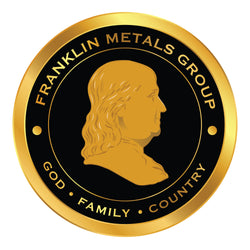
The US is also prepared with a gold revaluation mechanism.
In a recent interview with Mark Moss of Market Disruptors, available on YouTube, Luke Gromen of the Forest for the Trees financial letter discussed a topic concerning the U.S. Treasury Department and Federal Reserve, which has also been considered by other governments and central banks.
The U.S. Treasury Department essentially holds a gold revaluation account at the Federal Reserve, which could be used to revalue U.S. gold reserves, allowing the Treasury to generate any amount of U.S. dollars. This account is known as the Gold Certificate Account, as described on Page 12 of the April edition of the Fed's Financial Accounting Manual for Federal Reserve Banks.
The manual states: "The Secretary of the Treasury is authorized to issue gold certificates to the Reserve Banks to monetize gold held by the U.S. Department of the Treasury. At any time, Treasury may reacquire the gold certificates by demonetizing the gold.
"Treasury maintains an account with the [Federal Reserve's] Board of Governors entitled 'Gold Certificate Fund / Board of Governors of the FR System.' When the Treasury monetizes gold, it credits this account in return for deposit credit at the Federal Reserve Bank of New York (FRBNY). When demonetizing gold, Treasury decreases the account and authorizes the FRBNY to charge its deposit account.
"The offsetting entry in each case on FRBNY's books is made to the Gold Certificate Account and the U.S. Treasury General Account. The FRBNY accounting staff sends an advice of these entries to the [Federal Reserve] Board [of Governors].
"Also, whenever the official price of gold is changed, Treasury adjusts the account and, simultaneously, the deposit account."
The practice of revaluing government gold reserves to create money is not a new mechanism. It's a concept so old that it's nearly forgotten -- exemplified by President Franklin D. Roosevelt's 1934 revaluation of gold from $20.67 per ounce to $35 per ounce, a move that facilitated money creation, as recently detailed by Money Metals News Service writer Mike Maharrey.
The idea of revaluing the U.S. gold reserve to enable money creation was notably mentioned by former Fed Board of Governors member Lyle Gramley during a December 2008 interview with Business News Network in Canada. U.S. economists Paul Brodsky and Lee Quaintance also examined it extensively in 2012.
During his discussion with Moss this week, Gromen speculated that a significant official revaluation of gold -- for example, to $20,000 per ounce or higher -- could allow the U.S. government to generate trillions of dollars, enough to repay a substantial portion of its debt and make the debt-to-GDP ratio appear more manageable and sustainable.
Moss countered that such a revaluation would likely trigger massive inflation, but Gromen argued that only substantial inflation could alleviate the debt problem and that other countries have endured and adapted to similar situations.
Ultimately, gold revaluation, like the recent suggestion for the Treasury to mint trillion-dollar platinum coins and convert them into cash at the Fed, is seen as an accounting maneuver to justify creating money disproportionate to the nation's economic output.
However, the fact that governments and central banks are prepared for gold revaluation serves as a reminder that gold remains not just money, but also a crucial element in the financial system -- and that the most ardent gold enthusiasts might just be central bankers and the politicians they serve, maintaining a global financial system so complex that only gold might be able to save it.
